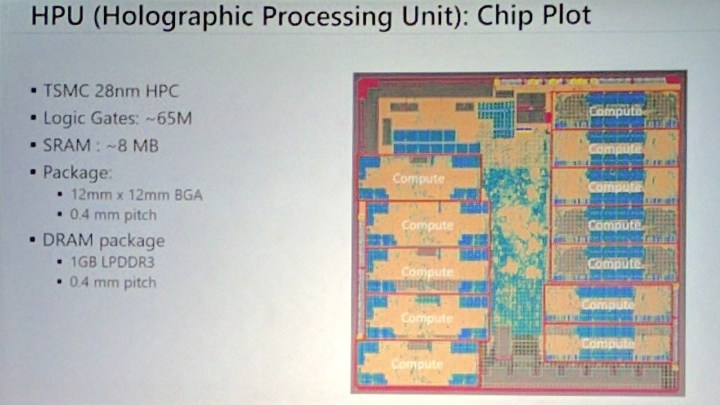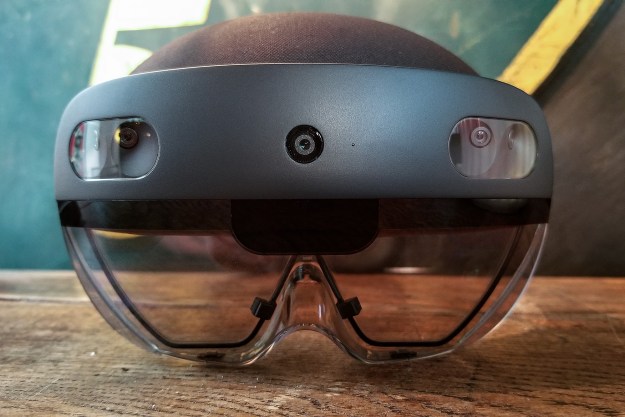
Now, Microsoft has detailed what powers all of its augmented visuals, and it’s quite different than the kind of hardware used in many other devices out there.
For starters, it’s called an HPU, or Holographic Processing Unit, and it’s built upon the 28nm manufacturing process by major Taiwanese foundry TSMC. In comparison, AMD and Intel’s next generation processors are built using the 14nm FinFET design — the 28nm TSMC process is more similar to last-generation graphics hardware.
It features an impressive 24 cores, each of which handles a single sensor input/output, helping to craft the augmented visuals that HoloLens users see.
That HPU is paired up with an Intel Atom x86 chip, with 1GB of LPDDR3 memory. All of this is bundled into a 12mm by 12mm package, making the chip quite compact – something that is of course very important when you’re talking about a mobile peripheral like the HoloLens headset.
Another important aspect is power draw. If the HPU required hundreds of watts of power, it would drain any internal battery in no time, but Microsoft’s design is very energy efficient. It draws less than 10 watts when in use, and it does the job of “pre-baking” data before sending it on to the CPU, which reduces the job that the Atom chip has to do.
More specifically, the HPU handles sensor, environment, and gesture recognition data. Its design is hard-wired to make these operations more efficient than a general-purpose processor, like the Atom it’s paired with. This is similar to Intel’s new Project Alloy, which uses an Intel Core processor to handle sensor data.
Where they differ, though, is that Intel uses one chip for everything, while Microsoft teams up the Atom CPU with its custom HPU.
This certainly gives us a much better idea of how HoloLens works. Now it’s just a question of Microsoft refining the design, bringing the price down and fixing a few of its quirks.
Editors' Recommendations
- We now know why Apple’s Reality Pro headset was delayed
- We finally might know what Apple will call its AR/VR headset
- Doing work in VR never made sense, and now we know why
- Turns out Microsoft’s HoloLens 3 might not be dead after all
- You won’t be taking Microsoft’s HoloLens 3 into the metaverse




